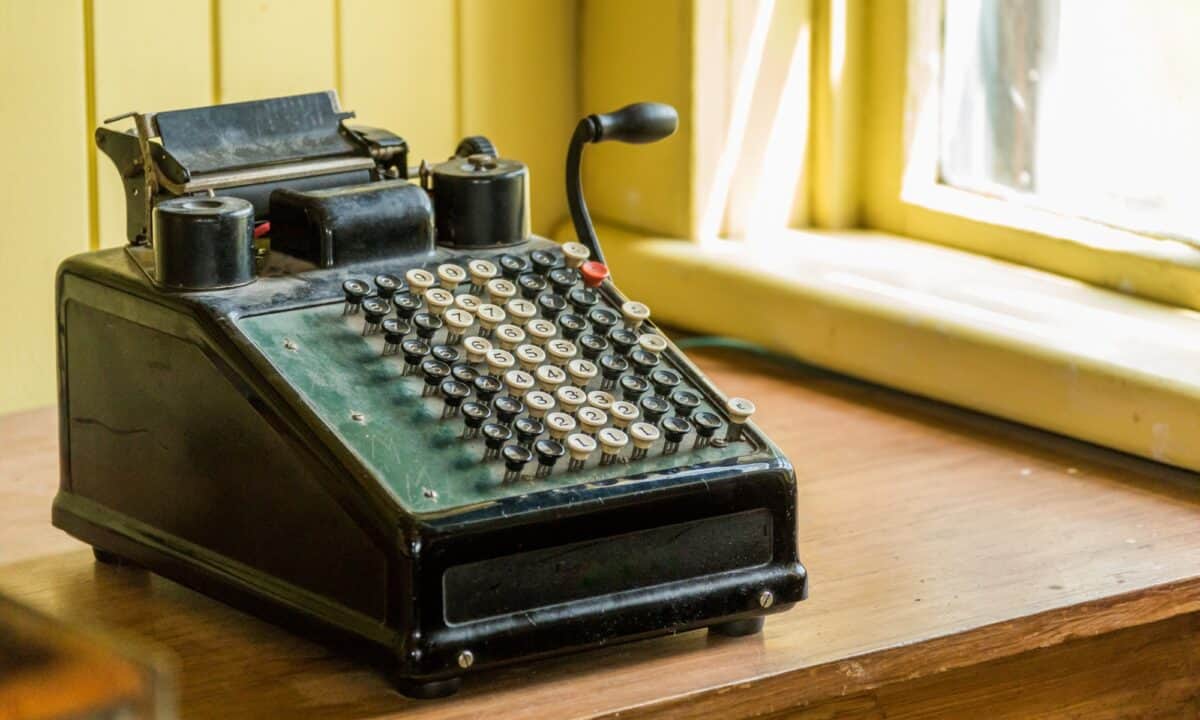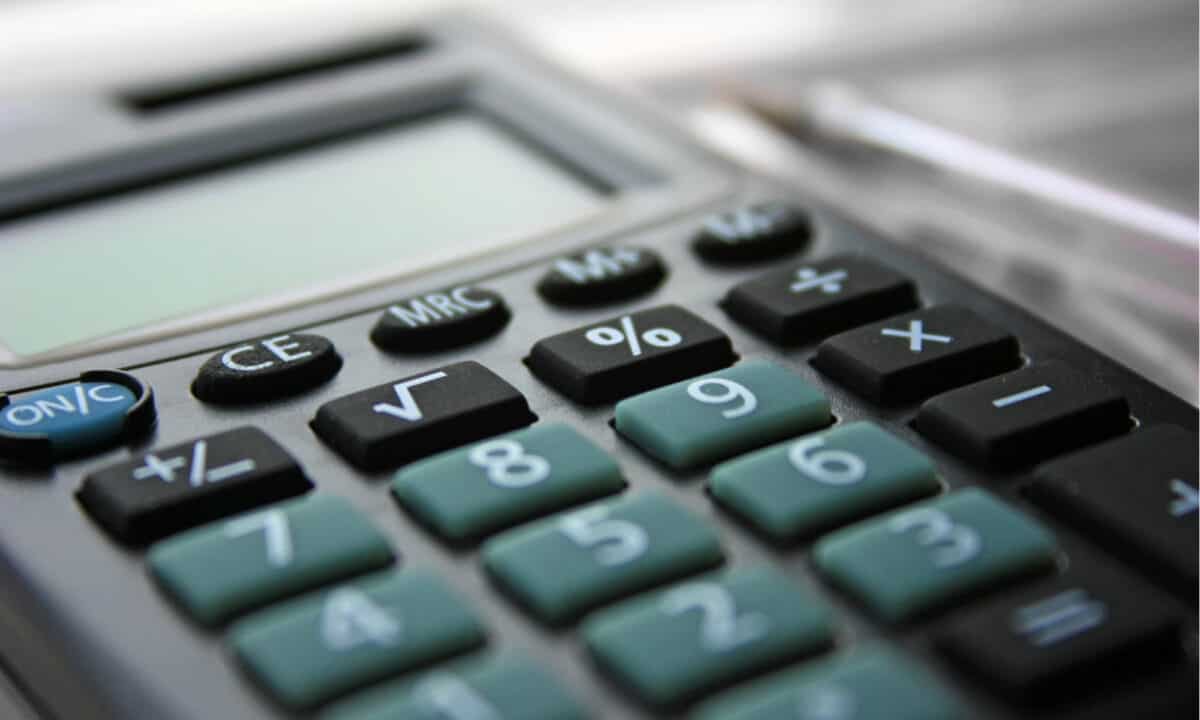Since the dawn of time, the calculator has played an integral role in how the world functions. Mathematical calculations are key to regulating trade, determining the dimensions of land, and planning the construction of buildings, just to name a few essential uses. What’s more, early calculating devices eventually gave way to the first digital computers. But how did one give way to the other? Let’s find out!
Three Facts about the History of Calculating Tools
- In all honesty, the earliest calculating tool came already built into mankind: fingers and toes. Before even the crudest, most archaic of the early calculating devices had been invented, here are the facts: humans first did their counting with their hands and feet.
- Ancient Japan’s soroban device was an early predecessor to the abacus, as was the Chinese suanpan.
- While calculating tools didn’t come until later, mathematics has been around since the BCE era. For instance, geometry dates back to Ancient Greece around 300 BCE.

Calculating Tools: History
Looking back, the earliest calculating devices were the methods of shorthand writing used by the ancient Egyptians, Greeks, and Mesopotamians to indicate large, specific quantities. For the Egyptians, Greeks, and Mesopotamians, this shorthand varied from culture to culture but almost always included groups of lines for single units and unique characters for further intervals of fives and tens. As time went on, sticks, knots, and tally marks became other popular ways of keeping track of quantities.
Believe it or not, these crude methods — along with the use of Roman numerals — lasted all the way through to the Renaissance. This is because many people and many societies were extremely wary of the numerals we know and use today because of concerns over accuracy and any potential forgeries that might arise from a more standardized, less personal system of calculating.
As far as calculating tools are concerned, here are the facts: The abacus is widely considered to be the most notable pre-modern calculating device, and it’s a device typically grouped together with the wire-and-bead devices that originated in the Middle East. While there’s no real way to know for certain when and where the abacus truly originated, it’s fair to assume the word “abacus” dates back to the ancient Middle Eastern calculating methods of moving pebbles along lines drawn in the sand.
Between the 15th and 18th centuries, European inventors were hard at work on several early calculating devices. During this time, there was also a major resurgence in several classical and Middle Eastern calculating devices. This time saw many inventors developing new calculating tools designed for all sorts of different uses. Across the board, these tools almost always relied on a series of numbers placed on a wooden, metal, or paper line. Inventors would attach these lines to each other and then use them to group the numbers in various different ways to perform calculations.
Scottish mathematician and inventor John Napier developed a set of rods to calculate multiplications around 1614. His idea to place these rods in a box effectively laid the groundwork for the gear-based carry mechanisms that would be a key part of the earliest mechanical calculating devices. Other inventors making important developments at this time were Blaise Pascal and his multiplication machines during the mid-17th century, Gottfried Wilhelm von Leibniz, and Samuel Morland.
Napier, Pascal, Morland, and von Leibniz’s work during the 1600s had a direct impact on Johann Helfrich von Müller’s creation of the difference engine, which was invented to calculate logarithmic tables. Müller’s invention was intended to be an error-free device that could replace the need for humans to compute by hand. Not long after, in the early 1800s, British mathematician Charles Babbage tried to invent a calculating tool able to both calculate and print out logarithmic tables. While he couldn’t ever figure it out for certain, his son Henry managed to make it work in the 1870s.
Concurrent to Henry’s work, the arithmometer was being conceptualized and brought to life. Considered the very first calculating machine to do addition, subtraction, multiplication, and division successfully, inventor Charles Xavier Thomas de Colmar derived his idea from Leibniz’s work decades earlier. Thomas’s arithmometer was a major commercial success, due in large part to its multifunctionality as an adder, a subtractor, a multiplier, and a divider. The release of the arithmometer in 1851 effectively kicked off the mechanical calculator industry as we know it today. From 1851 to the late 1880s, Thomas’s arithmometer was the one and only mechanical calculator on the market.
While it fell in popularity in the late 1800s and early 1900s, it remained in use in some capacity or another until the end of World War I. It was here that calculating tools gave way to digital calculators.

©kos1976/Shutterstock.com
The History of Calculating Tools: How They Worked
Early versions of the abacus worked as follows: a metal, wooden, or paper frame held several rods. Each rod would be equipped with ten beads. After all ten beads on a single rod had been slid over to one side, users would then move onto the rod below or across (depending on the layout or orientation of the particular abacus). This worked well for addition and subtraction but wasn’t really ideal for multiplication or division.
Multiplication and division became possible on early calculating tools when the slide rule was conceived by the likes of John Napier, Edward Gunter, William Oughtred, and others during the 17th century. The slide rule was a series of movable sticks or disks that relied on logarithmic scales to facilitate fast multiplication and division. Eventually, with future improvements, these devices allowed for more complicated trigonometry, exponentials, logarithms, and even square roots.
In time, various gears, rotating wheels, and pressable buttons made for even more advanced calculating tools. For instance, Blaise Pascal’s calculating tool relied on gears and wheels to quickly add and subtract numbers.
The History of Electronic Calculators
The first digital calculators were large, bulky, heavy desktop models, which were first introduced in 1961 by the British company Bell Punch. Two models, ANITA Mk VII and ANITA Mk 8 utilized vacuum tube technology. By the mid-1960s, several manufacturers began to produce transistorized desktop calculators.
In 1971, portable electronic handheld calculators that relied on batteries or AC were introduced. These were primarily desktop models, but they were small enough to carry in a briefcase.
The first pocket-sized calculators were launched in 1971. Initially, they were made by big-name electronics manufacturers such as Canon and Sharp, and they were quite expensive. Eventually, other manufacturers saw the potential of these devices and started making them for the masses. By the mid-1970s, the price of pocket calculators dropped dramatically so they became affordable for everyone.
The History of Calculating Tools: Historical Significance
These early calculating tools are some of the most historically significant inventions of all time. This is no exaggeration — without them, we would have no digital calculators, and without those, we would have no computers. It’s practically impossible to imagine the modern world without them. You see, inventors like Leibniz, Müller, Babbage, and Pascal laid the groundwork for digital computers with their revolutionary discovery of automated calculation via gears and registers that stored information and allowed it to be read mechanically. Without their revolutionary ideas, the digital calculator — and, later, the computer — never would have been invented.